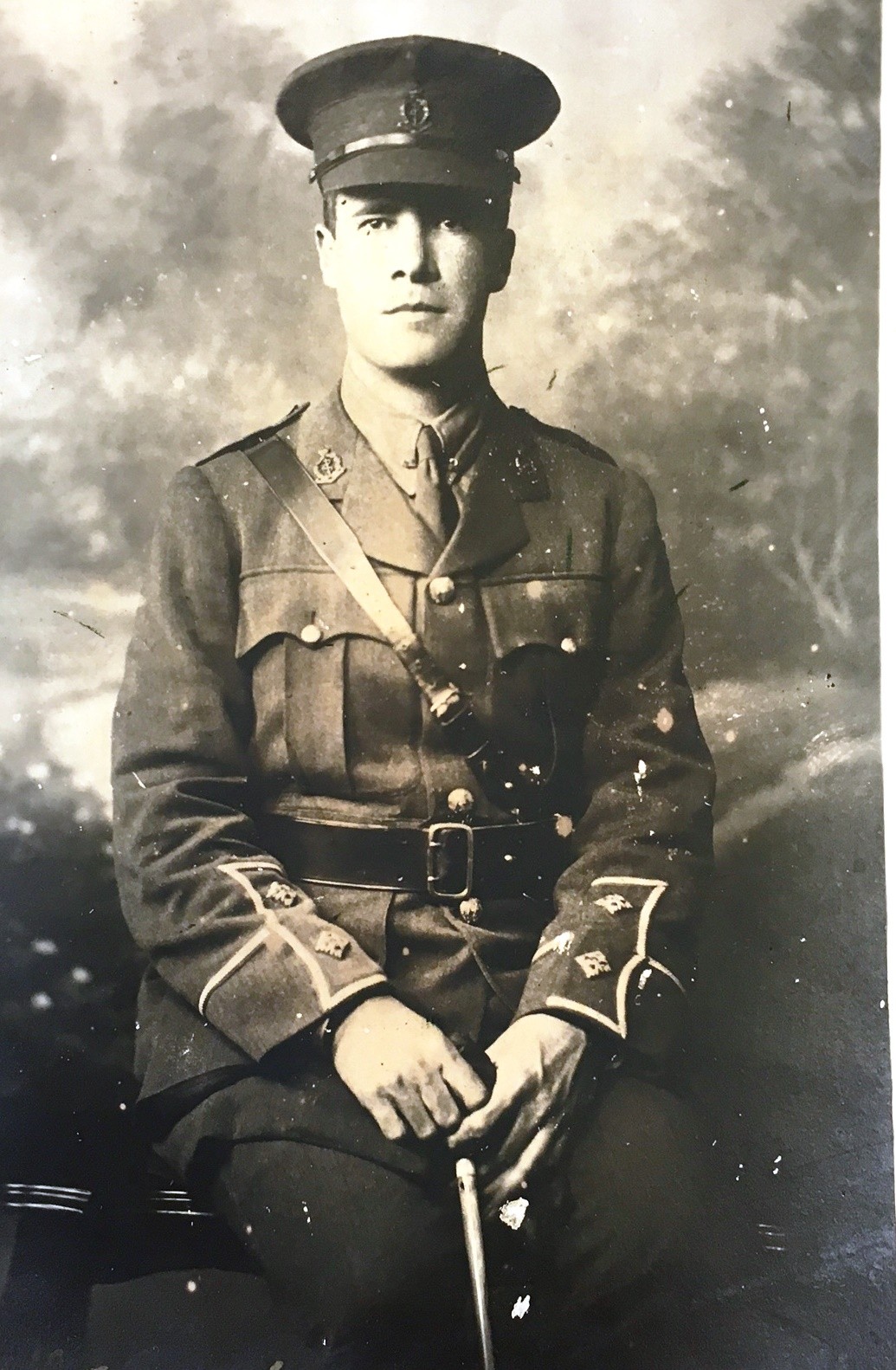
Lieutenant Edward Oswald (Ted) Marks of the Royal Army Medical Corps. John Oxley Library, Marks Family Collection, Acc: 27331, item 3000.
A very large family archive held in the John Oxley Library is that of the Marks family of Brisbane, members of whom were prominent in the medical, scientific and military spheres of Queensland society. The patriarch of the family, Charles Ferdinand Marks, was born in England, but studied and practiced medicine in Ireland before emigrating to Queensland. His father, Alexander Hammett Marks (1818-1896) was an Irish doctor, and subsequent generations of the family also had a strong connection to their Irish heritage.
Two sons of the family, Alexander Hammett Marks (named after his grandfather) and his half brother Espie Dods, served as doctors in the Australian Army Medical Corps during World War I. Their younger brother, Edward Oswald Marks, known as Ted, was studying medicine in Dublin at the time of the rebellion. He displayed great courage in treating the wounded during the conflict. After graduating in July 1916 he joined the British Army as a doctor serving on the Western Front, before being repatriated back to England with rheumatic fever. He later had a distinguished medical career in Australia as an ophthalmologist.
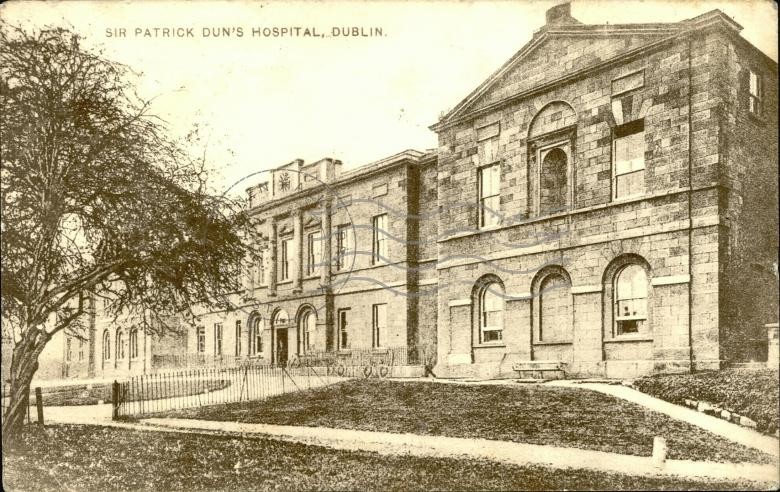
Sir Patrick Dun's Hospital, Dublin. Image courtesy of Linen Hall Library, Belfast, Ireland. Postcards Ireland: Irelandhttp://www.postcardsireland.com/postcard/sir-patrick-duns-hospital
Ted Marks was based at Sir Patrick Dun's Hospital in Dublin in 1916, completing his medical training, when the Easter Rising took place. Beginning on Easter Monday, 24 April 1916, and lasting for six days, the rebellion was launched by Irish republicans in a bid to end British rule. A fierce battle took place in Mount Street just outside the hospital. When there was a lull in the fighting doctors and nurses, including Ted Marks, ran out to assist the wounded and retrieve the dead.
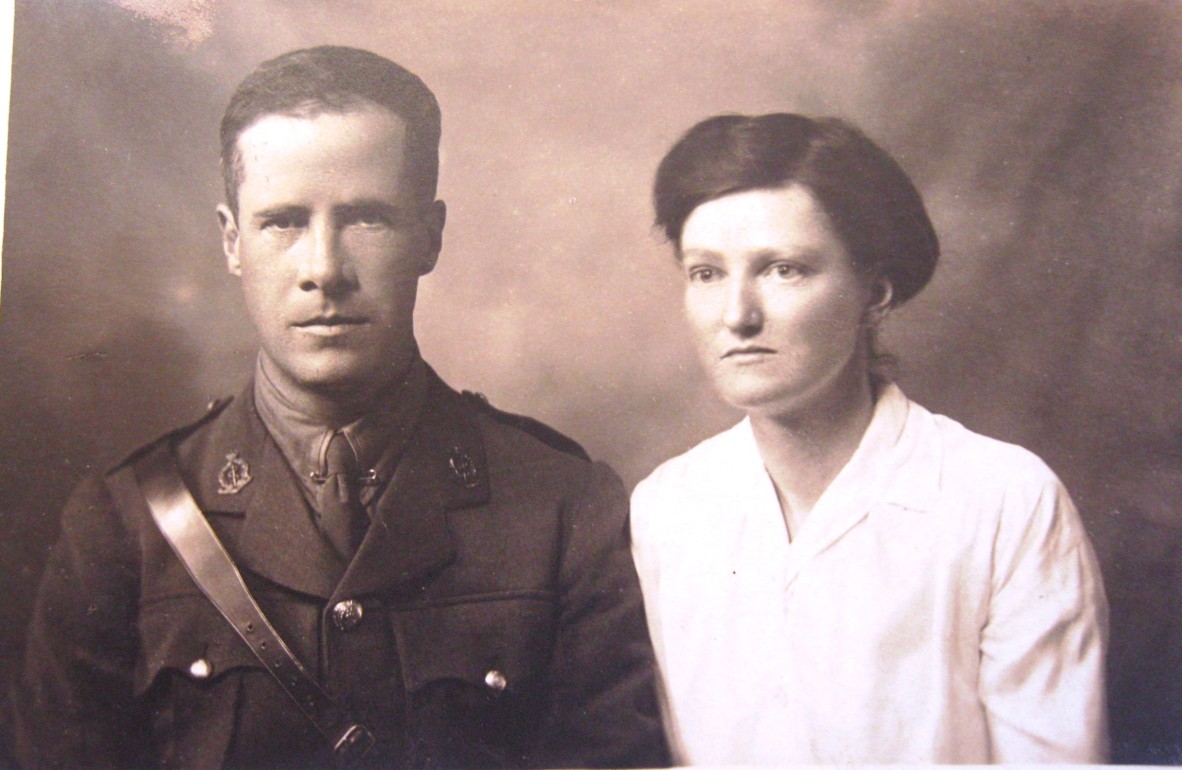
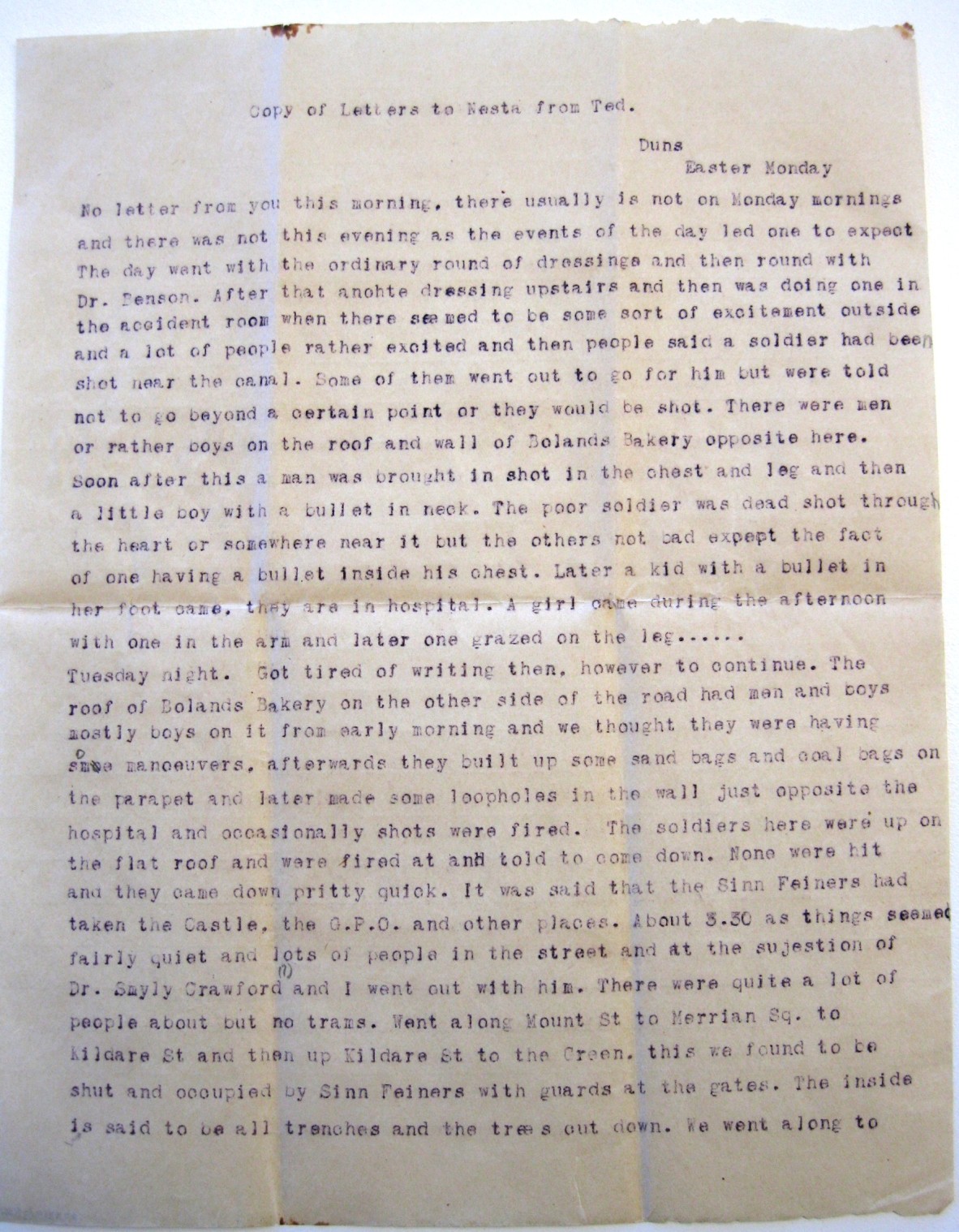
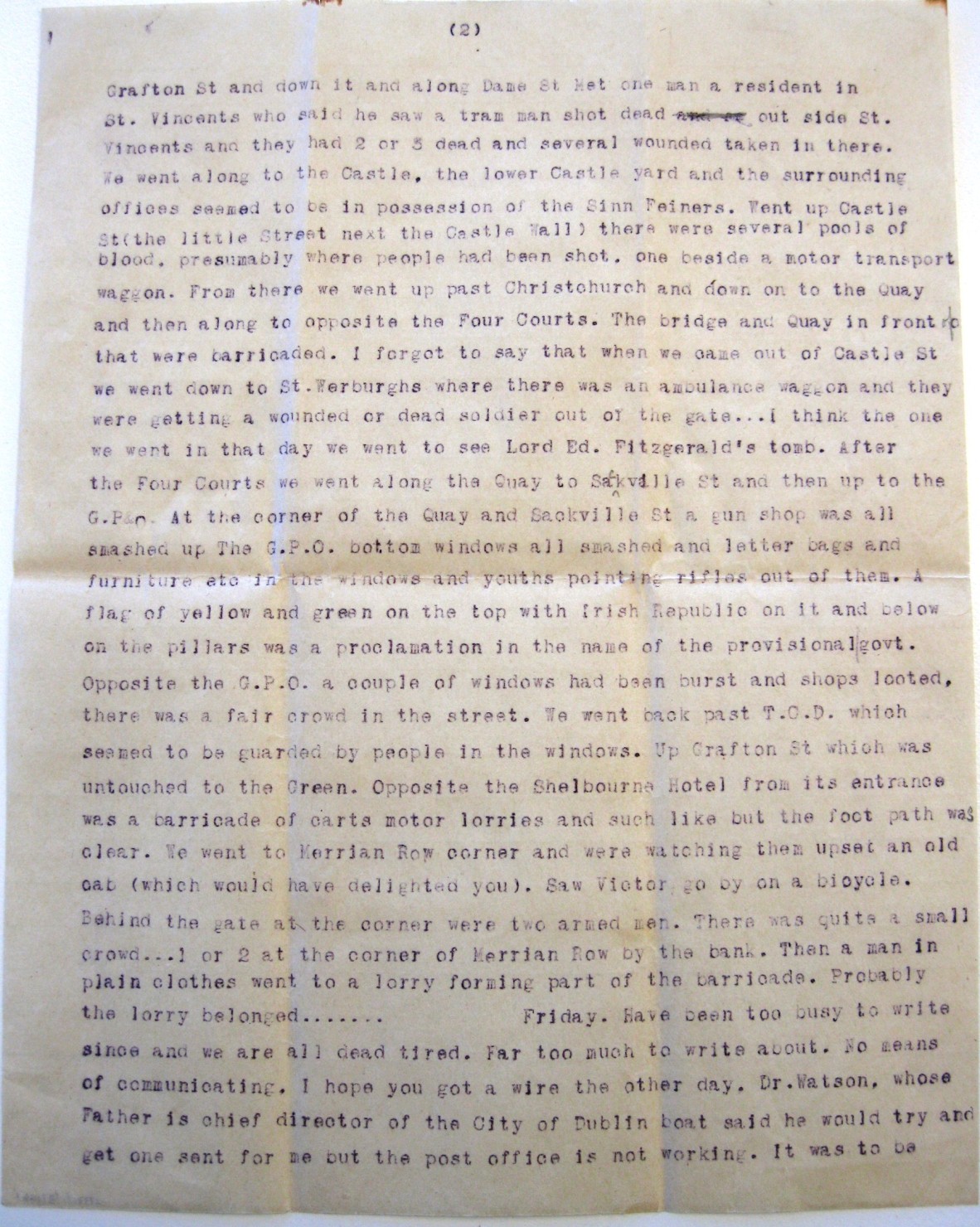
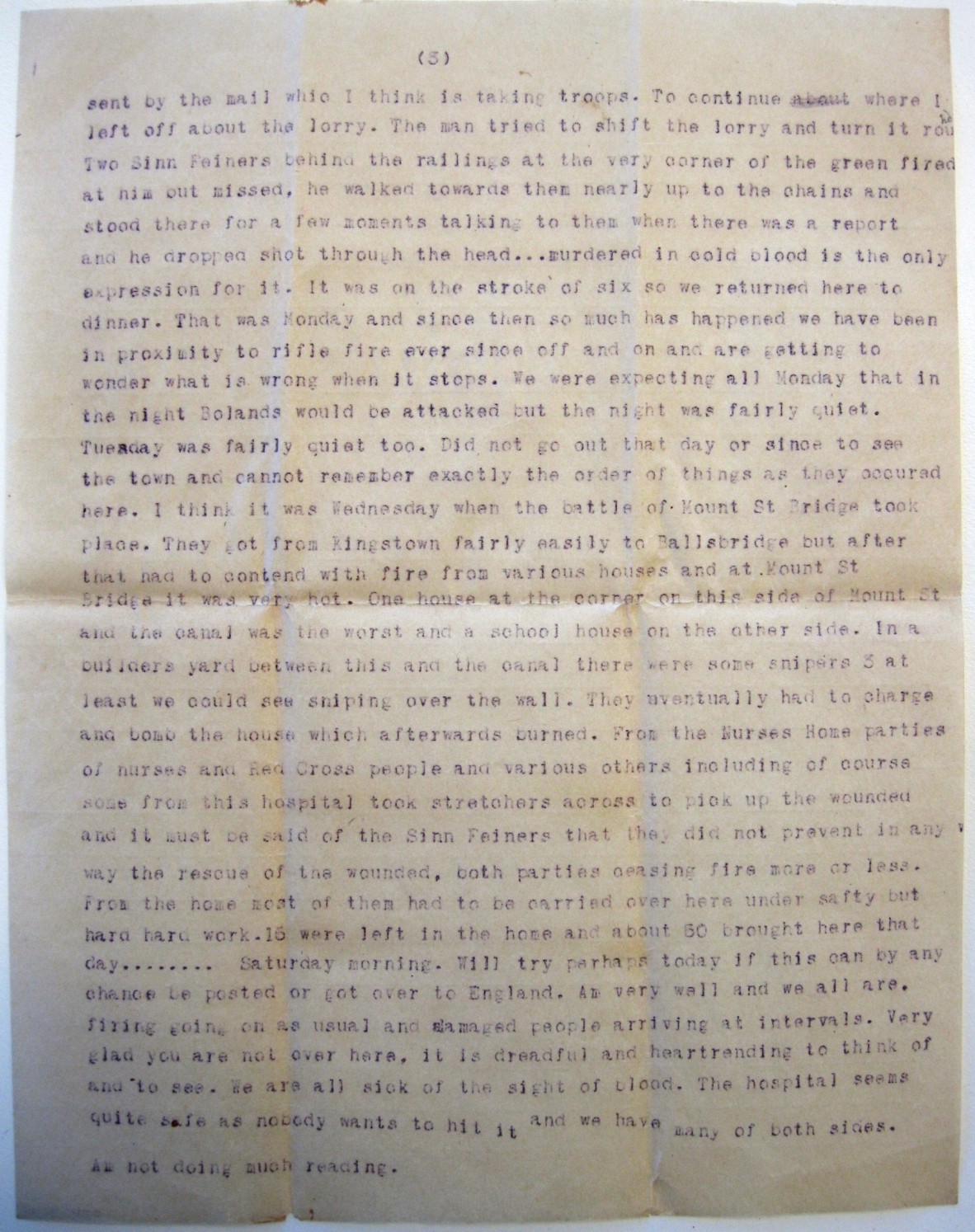
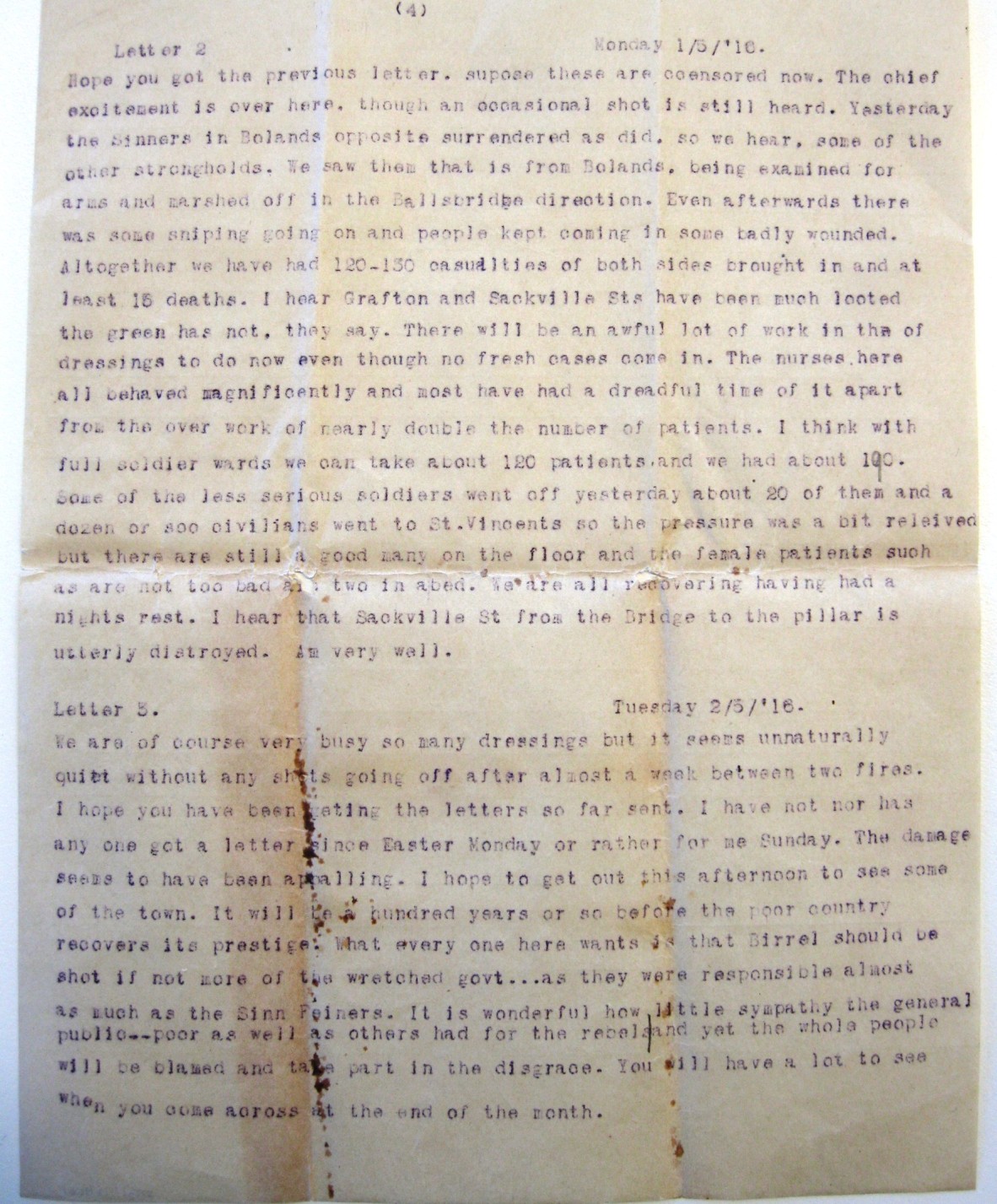
The collection also includes a letter written to Ted by Nesta, who at the time was working on an English farm as a land girl. She wrote the following letter on May 31st 1916 expressing her relief at receiving news that he was safe and well, and wishing that she had been there to assist. Nesta had received first aid training as a member of the Voluntary Aid Detachment.
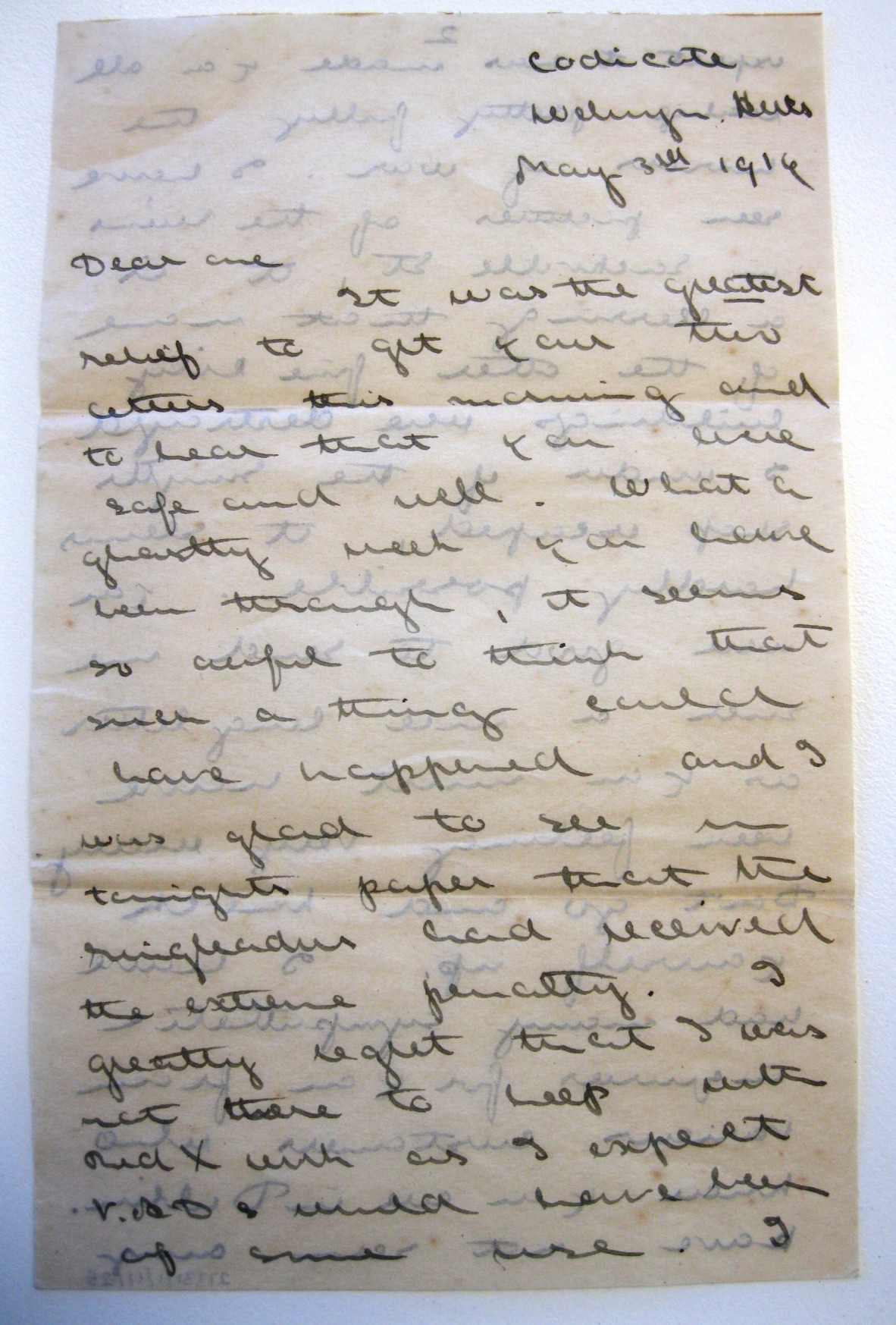
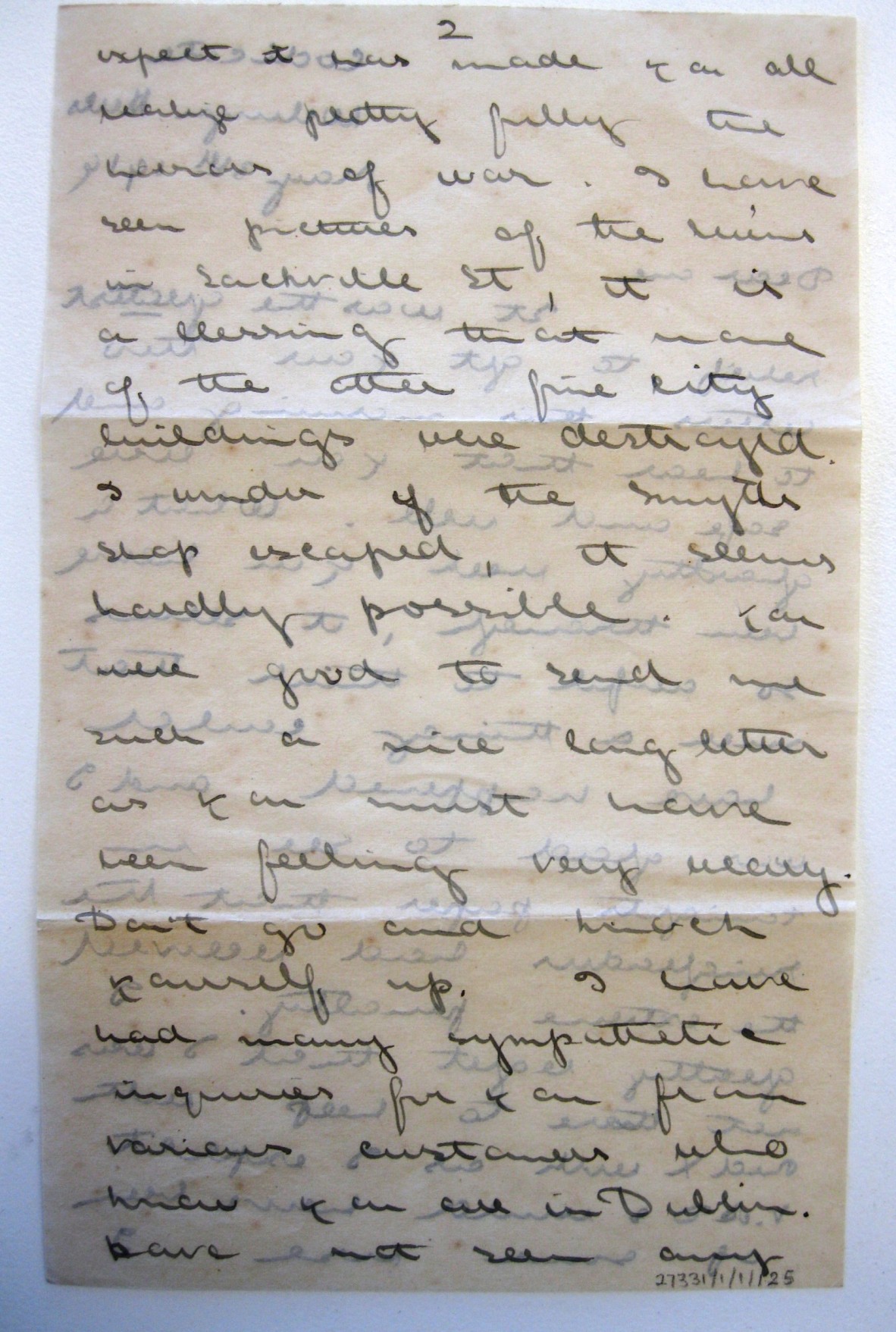
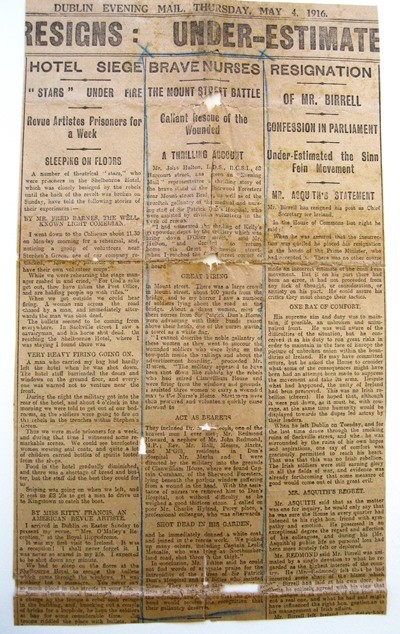
Other material in the Marks collection relating to the Easter Rebellion includes postcards and publications, including the Sinn Fein Rebellion Handbook, Easter 1916, second edition. This handbook contains a complete narrative of the rising, lists of casualties, official lists of prisoners and a description of the work of the various hospitals in assisting the injured.
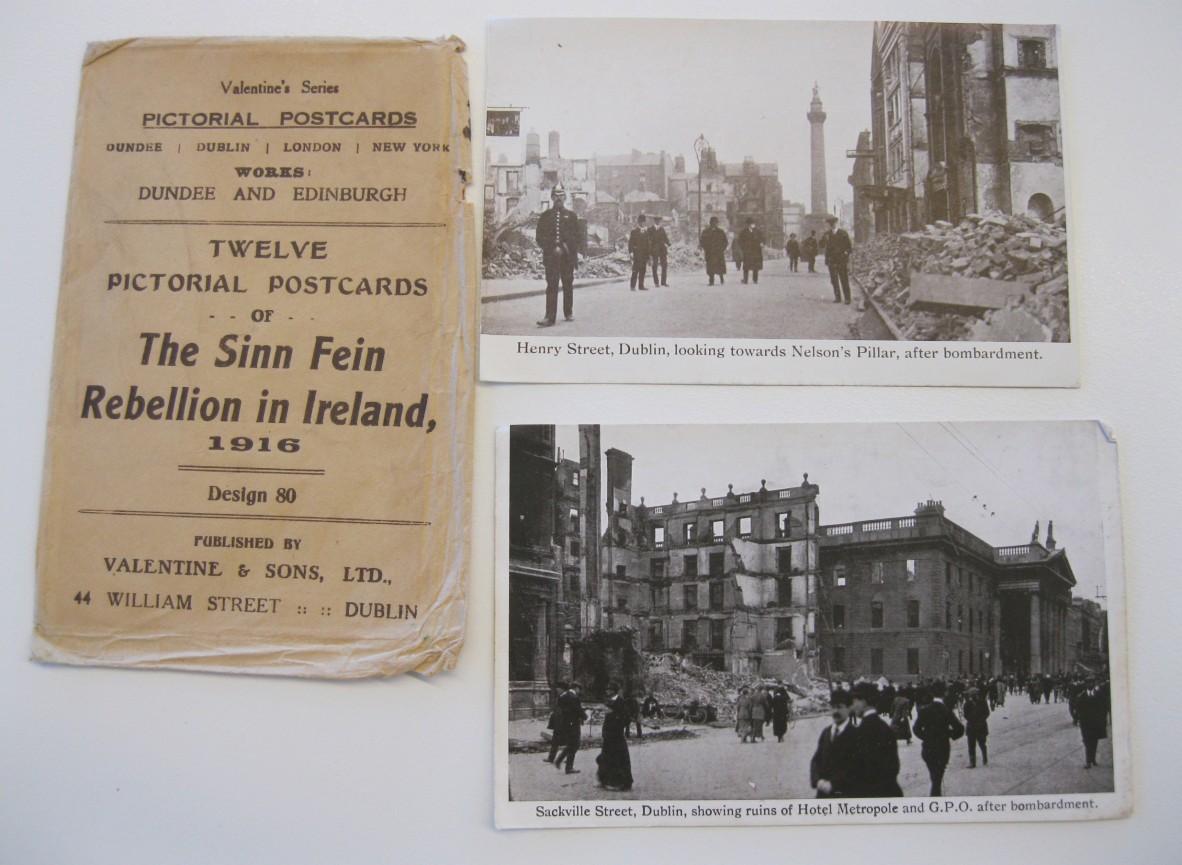
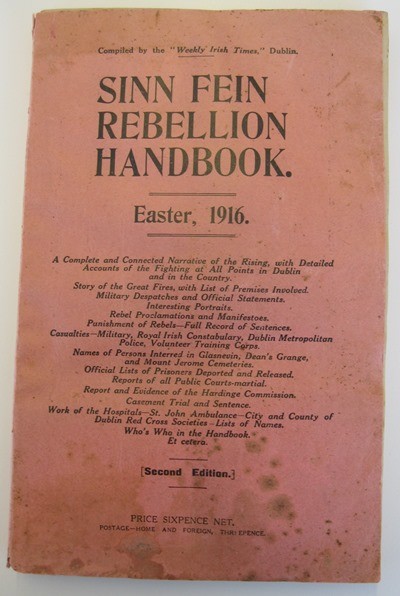
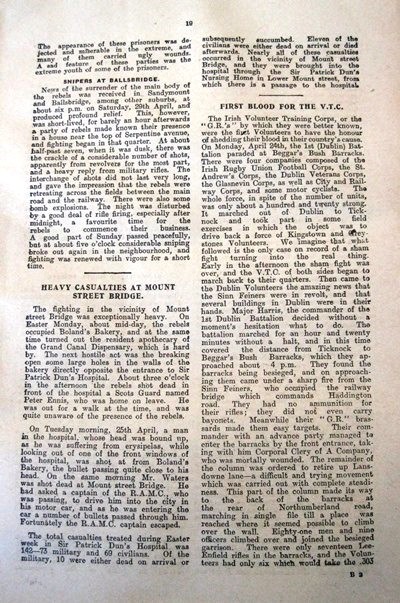
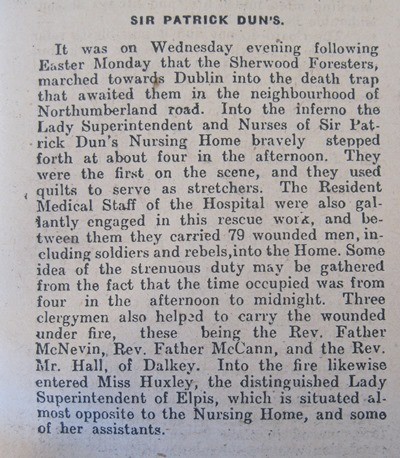
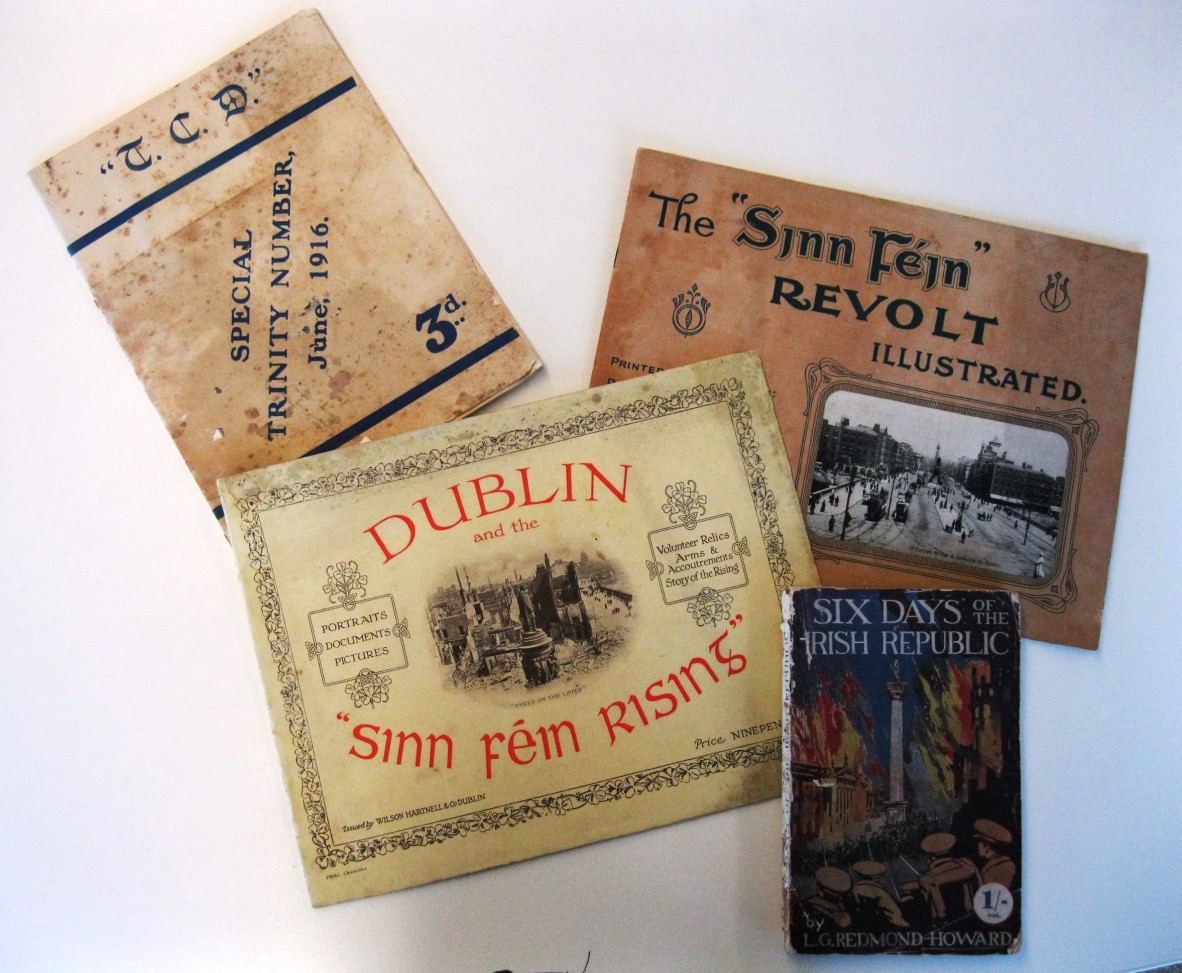
Publications relating to the Easter Rising in the Marks Family Collection, Acc: 27331, Item 3144.
Ultimately the Easter Rising was unsuccessful as the British Army had greater numbers and heavier weapons. On Saturday, 29th April, the insurgents agreed to an unconditional surrender. The consequences for Ireland were severe. About 3,500 people were taken prisoner, many of whom had played no part in the uprising, and most of the leaders of the rebellion were executed. Almost 500 people were killed, more than half being civilians caught up in the conflict, and many parts of Dublin were left in ruins from the heavy shelling by British troops.
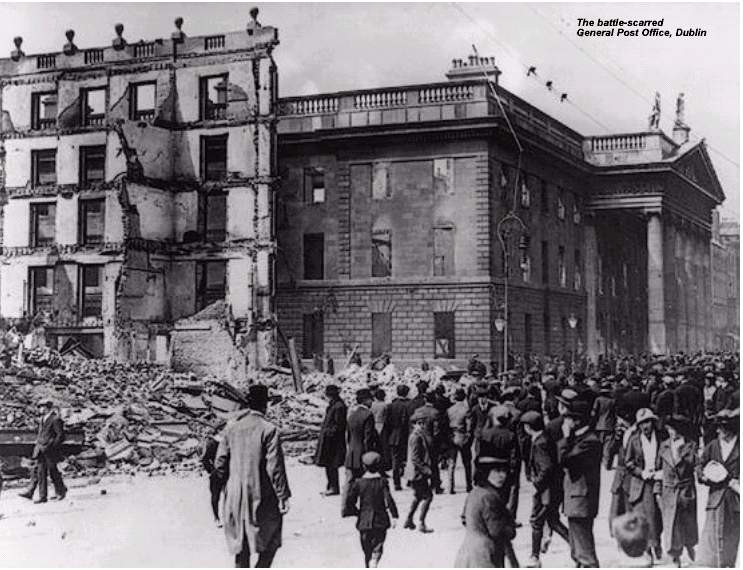
The General Post Office in Dublin after the uprising. Photograph from website "ExecutedToday.com": http://www.executedtoday.com/2008/05/12/1916-james-connolly-socialist-revolutionary/
However the uprising galvanised the country's desire for independence and ultimately led to the declaration of the Irish Free State in December 1921, in which four-fifths of Ireland became an independent state. In 1949 Ireland was officially declared a republic.
The Marks Family Collection, Accession 27331, has been partially digitised and may be viewed at: http://onesearch.slq.qld.gov.au/SLQ:OM:slq_alma21168504630002061
Lynn Meyers, QANZAC100 Content Curator
Comments
Your email address will not be published.
We welcome relevant, respectful comments.